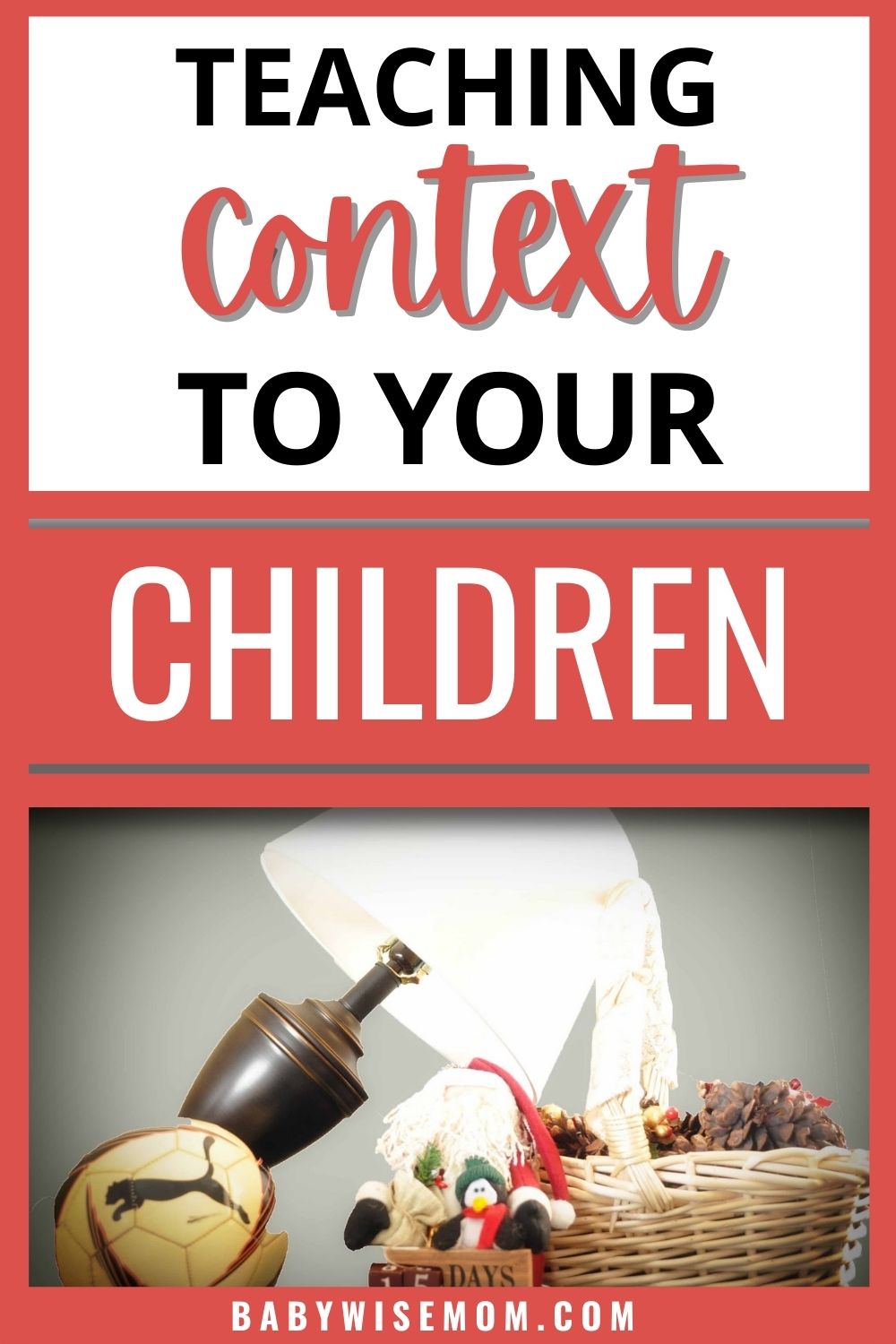Children need to learn that there is a time and a place for rules to be followed. We don’t throw ball inside, but can outside.

Our last moral precept discussion from On Becoming Childwise was on teaching Why. That idea spills over in our topic for today: context.
Have you ever given your child an instruction that involved any of these:
- Do not run
- Do not yell
- Do not throw the ball
- Whisper
- Fold your arms
- Do not tattle
- Obey authority figures
I think most of us, if not all, have used all of these instructions at one point or another.
But what about context? Do our children understand that these instructions are not black and white?
Do we want our children to never run in life? Is it never okay to yell? No balls for childhood? Must we always whisper? Is a child to fold arms at all times? If a child is hurting another child, should the child say nothing–because telling would be tattling? And what if the child were to encounter an authority figure who said or did immoral things–should the child obey that figure?
I think one of the hardest tricks with children is teaching them appropriate rules for the appropriate context. Children have a hard time understanding exceptions to rules such as “no tattling.”
This is where what we have discussed thus far on the topic of morals comes in handy. It all builds on each other.
We have learned that Other People Count. We have learned about The Golden Rule (and the Platinum Rule). We have learned that we should Teach What is Right, Not Just What is Wrong. We have also talked about how our own example teaches so much to our children in It Starts With You.
If a child has learned that other people matter and to think of how they would want to be treated, the child can understand a rule in context to not run in a place where running could result in hurting someone.
If a child knows not only what not to do, but what to do, the child has a fuller picture of what appropriate behavior is.
If a child has a good example to model, making correct decisions is all that easier.
It takes years. And years. Let’s be real, a lot of times as adults we have to really think about context to know if and when something is appropriate, and we all get it wrong sometimes.
The other day, Brayden told my husband and I that he had to go P-O-O-P. He spelled it out, and told us he did so so that he wouldn’t say an inappropriate word.
We explained it was okay to say when talking about the actual thing, but that it wasn’t okay to call someone that.
It just takes a lot of time for children to understand context.
When you get the chance, explain the why to your child behind the context of of the situation. When you teach the why, it helps your child to make a correct decision on her own in the future when she faces the same or similar situation.
Related Posts

